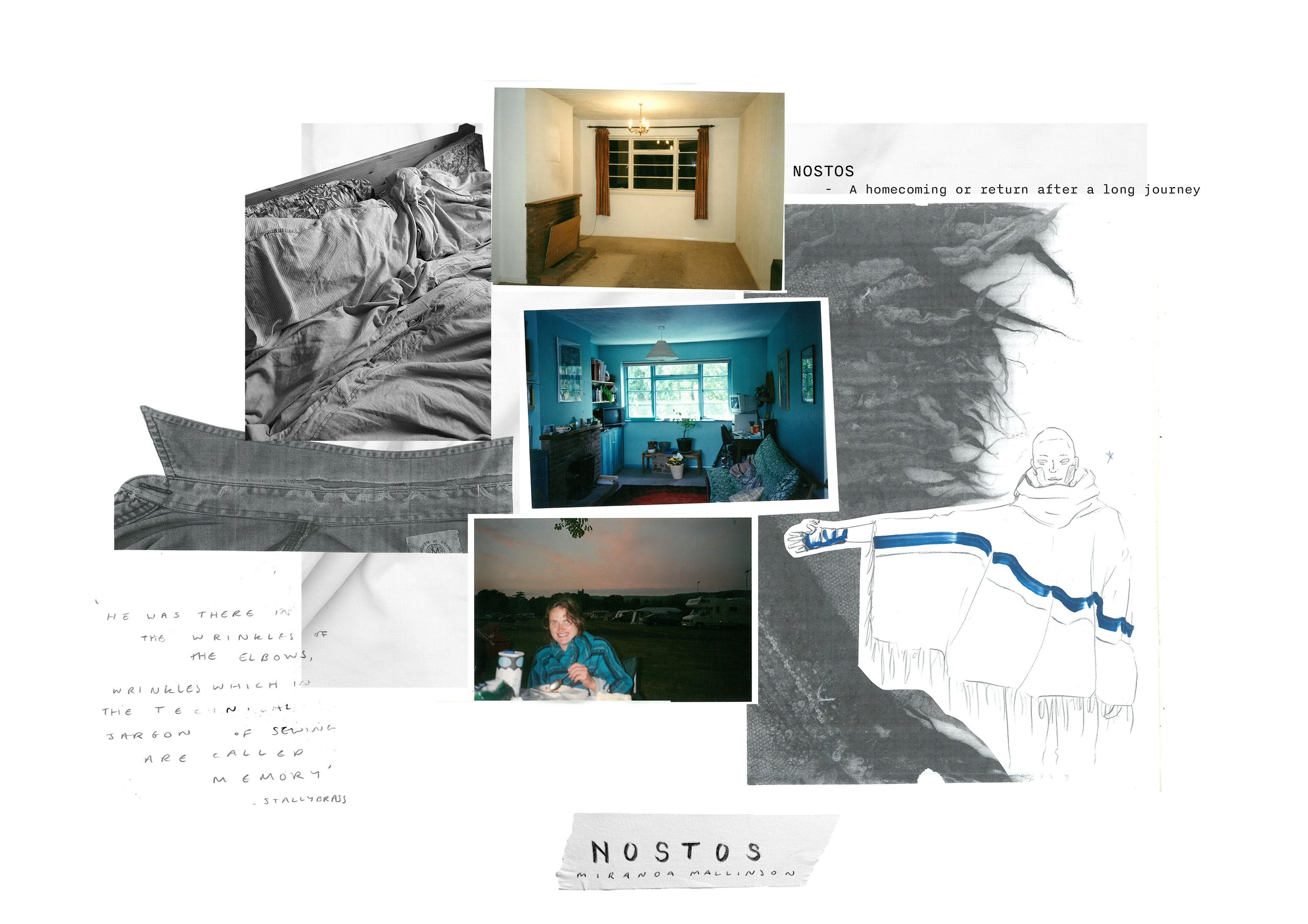Miranda Mallinson-Pocock
Redress Design Award 2024 finalist
Bio
Miranda Mallinson-Pocock is a Finalist of the Redress Design Award 2024. She is studying for her BA (Hons) in Fashion Design from Kingston University, UK.
“My focus as a sustainable designer is on preservation, creating from what is already in our local communities and designing pieces that have purpose and longevity.” – Miranda Mallinson-Pocock
redress Design Award Collection
Miranda’s Redress Design Award collection, ‘Nostos’, reflects the theme of homecoming and how we seek comfort in our homes during chaos and change. The collection repurposes home textiles such as bed linens and soft furnishings, and reknits moth-eaten or neglected jumpers, to create elevated everyday pieces that carry nostalgic memories. Felting adds patterns and textures to knitwear, along with improving the strength and durability from natural fibres such as wool and ramie.
Q&A WITH THE DESIGNER
1. Who or what inspired you to pursue sustainable fashion, and inspired the creativity behind your Redress Design Award collection?
It was natural for me to design and create garments from what was already around me. Both my parents repurposed and reused what we had. Curtains would find a second life as pillow cases, bedsheets as children’s costumes, and odd trinkets made into light fittings or decorations. Seeing purpose in what others would regard as waste expands the creative design process, meaning my work can be led by the textiles themselves, leaning into their imperfections and irregularities.
2. What makes your Redress Design Award collection uniquely sustainable? (considering sustainable design techniques you have used in your collection, e.g. zero-waste, upcycling, reconstruction; or waste sources you have chosen)
By focusing on local sourcing methods, and relying on community for fabrics, I can minimise waste, not just in materials, but in carbon footprint from travel and processing.
Focusing on working with wool, lambswool, and other natural fibres means I can combine yarns of the same type to ensure recyclability. It was difficult working with yarns that have lost some of their strength, but with processes like felting, I’ve found ways to reuse these yarns which otherwise would not have been able to create a long-lasting garment.
Another key issue I consider a lot is wearability. I am passionate about making clothes that people would want to wear as a beautiful everyday garment, something that has purpose and function, not something to just be stored.
3. What is your career dream or goal? How do you see yourself developing in sustainable fashion in the future?
I am keen to develop my knowledge of the commercial side of the fashion industry, to better understand how sustainable practices can be scaled up in larger companies. With large companies able to greenwash their campaigns with little regulation, I would like to know how to discriminate between actual positive change and empty marketing.
I am also inspired by smaller companies combating waste in knitwear manufacturing, such as The Waste Yarn Project and Bethany Williams. Working with socially and environmentally conscious brands like these is a long-term goal of mine.
4. As a sustainable fashion designer, what is one item you must always keep with you?
Pack away tote bags! You never know when or where your materials will come from. Sometimes it’s when you least expect it that you discover or are gifted something, or come across a charity shop or market. It’s good to have a bag handy so you’re not stuck carrying armfuls of fabric around.
5. Anything else you would like to share with us about you or your collection?
I hope that when people see the collection, they get the same feeling of comfort from it that I do. The materials used are familiar to all of us, and I want to create something soft and inviting that resonates with people’s sense of safety at home.
news
REGION:
United Kingdom
DESIGN TECHNIQUES:
Upcycling
COLLECTION:
Menswear







